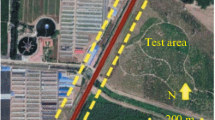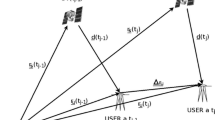Abstract
Accurate estimates of the velocity and acceleration of a platform are often needed in high dynamic positioning, airborne gravimetry, and geophysics. In turn, differentiation of GPS signals is a crucial process for obtaining these estimates. It is important in the measurement domain where, for example, the phase measurements are used along with their instantaneous derivative (Doppler) to estimate position and velocity. It is also important in postprocessing, where acceleration is usually estimated by differentiating estimates of position and velocity. Various methods of differentiating a signal can have very different effects on the resulting derivative, and their suitability varies from situation to situation. These comments set the stage for the investigations in this article. The objective is twofold: (1) to carry out a comprehensive study of possible differentiation methods, characterizing each in the frequency domain; and (2) to use real data to demonstrate each of these methods in both of the measurement and position domains, in conditions of variable, high, or unknown dynamics. Examples are given using real GPS data in both the measurement domain and in the position and velocity domain. The appropriate differentiator is used in several cases of varying dynamics to derive a Doppler signal from carrier phase measurements (rather than using the raw Doppler generated by the receiver). In the statistic case, it is seen that the accuracy of velocity estimates can be improved from 4.0 mm/s to 0.7 mm/s by using the correct filter. In conditions of medium dynamics experienced in an airborne gravity survey, it is demonstrated that accelerations as the 2–4 mGal level (1 mGal = 0.00001 m/s2) can be obtained at the required filtering periods. Finally, a precision motion table is used to show that when using the correct filter, velocity estimates under high dynamics can be improved by an order of magnitude to 27.0 mm/s. © 1999 John Wiley & Sons, Inc.
Similar content being viewed by others
Author information
Authors and Affiliations
Rights and permissions
About this article
Cite this article
Bruton, A., Glennie, C. & Schwarz, K. Differentiation for High-Precision GPS Velocity and Acceleration Determination. GPS Solutions 2, 7–21 (1999). https://doi.org/10.1007/PL00012771
Published:
Issue Date:
DOI: https://doi.org/10.1007/PL00012771




